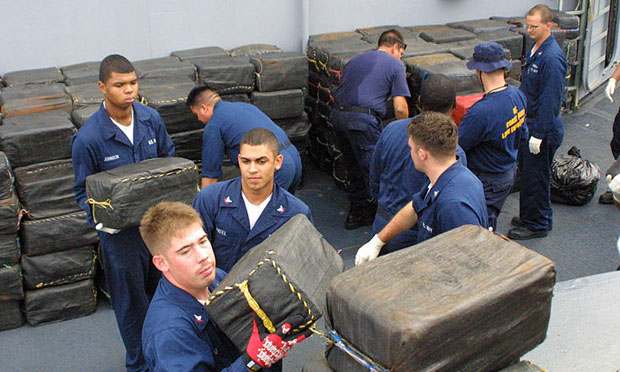
The Foreign Relations Appropriations Act requires that the President submit an annual report identifying countries that produce or serve as transit points for illicit drugs. Based on the report, formal U.S. assistance under the Foreign Operations Appropriations Act may be withheld from countries designated to have “failed demonstrably” to meet their obligations to curb the drug trade.
The first volume of a 2013 report by the Bureau for International Narcotics and Law Enforcement (INL), “International Narcotics Control Strategy Report, Volume I: Drug and Chemical Control,” identified countries that are major drug producers and those that serve as drug-transit points, as well as smaller countries with limited capacity to deal with drug issues. The report contains detailed information on specific countries, including, for example, Mexico and Colombia.
Highlights of the report include:
- Twenty countries were named as major drug-transit or -producing nations: Afghanistan, the Bahamas, Bolivia, Burma, Colombia, Costa Rica, Dominican Republic, Ecuador, Guatemala, Haiti, Honduras, India, Jamaica, Laos, Mexico, Nicaragua, Pakistan, Panama, Peru, and Venezuela. Of these countries, Bolivia, Burma and Venezuela are identified as having “failed demonstrably” to adhere to their international counternarcotics obligations.
- Major money-laundering countries are defined as those where “financial institutions engage in currency transactions involving significant amounts of proceeds from international narcotics trafficking.” The report identifies more than 60 money-laundering nations, including many involved in drug transit or production. This includes countries such as Canada, Germany, Greece, Israel, Japan, Switzerland, the United Kingdom, and the United States. (Money-laundering activities and control efforts are covered in depth in a companion report, “2013 International Narcotics Control Strategy Report: Volume II: Money Laundering and Financial Crimes.”)
- The U.S. employs different strategies in specific global regions. For example, “U.S. programs in Asia have traditionally focused on reducing opium production and raising law enforcement capacity,” while in Africa they “are dedicated to promoting the rule of law in countries that are threatened by political, social and economic instability.”
- “Demand reduction” is a key U.S. policy goal: “Based on the U.S. experience in trying to reduce the demand for drugs at home, many foreign countries request INL-sponsored technical assistance to enhance the development of effective policies and programs to combat narcotics abuse in countries around the world.”
- A wide number of organizations and agencies are involved in anti-drug efforts, including the Coast Guard, Customs, International Law Enforcement Academies and the Drug Enforcement Administration: “DEA’s contribution to our nation‘s international counternarcotics strategy is significantly enhanced through the 82 offices located in 62 countries that DEA maintains worldwide. These overseas offices work in close cooperation with DEA‘s U.S.-based offices to seamlessly pursue narcotics criminals domestic and foreign.”
- Disrupting the flow of synthetic precursor chemicals is another important area of focus: “2010 saw progress in the development of a more complete and systematic reporting regime covering the international trade in synthetic drug precursors.”
The report also gives an overview of other drug-interdiction efforts by the INL, including training countries’ law-enforcement agencies, supporting institution building, and building ties between U.S. law-enforcement agencies with their international equivalents.
Tags: crime
